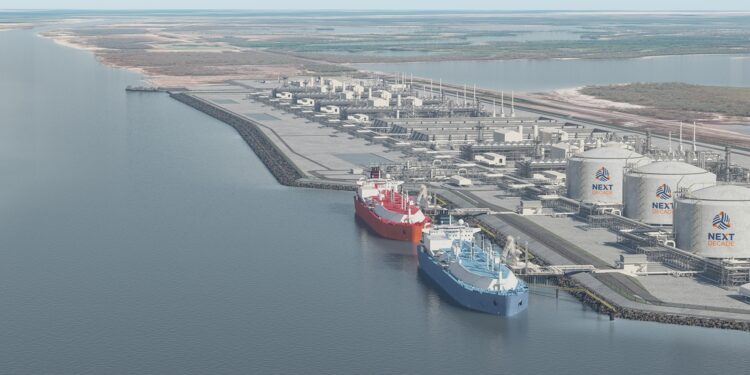The debate around new fuels continues, but one thing is clear: the shipping industry needs clarity of regulation, trust in technology and evidence of a strong supply chain, argues Steve Esau, General Manager at SEA-LNG.
Peter Keller, Chairman of SEA-LNG, says LNG’s growing popularity shows that it offers the certainty needed for investment as shipowners look to 2050. DNV recently reported that 20% of vessel orders placed this year have been LNG-fuelled; the majority are for large, globally-trading vessels equating to nearly 30% of gross tonnage according to Clarksons. Clearly, many shipowners recognise that there is no time to wait on reducing emissions and no reason to wait when choosing LNG. Let’s consider why.
LNG reduces SOx and particulates to negligible levels, NOx by up to 95%, and GHG emissions by up to 23% on a well-to-wake basis. It meets IMO 2020 sulphur requirements and helps shipowners comply with EEXI and CII benchmarks. Its use as bunker fuel has already been codified in the IMO’s IGF Code and proven safe in practice. These are today’s reasons for choosing LNG, but owners placing orders now need to look 20-30 years into the future. This is where the potential for using bioLNG and synthetic LNG becomes important.
LNG options
BioLNG can be made from many different types of biomass, including agricultural and forestry waste. In contrast, the availability of synthetic LNG does not depend on biological production systems. It is derived from the synthesis of CO2 and hydrogen. This hydrogen can be produced from water via electrolysis using renewable electricity, and the CO2 can be captured from industrial and power processes to produce carbon neutral synthetic LNG. It will soon also be available directly from the atmosphere.
Like LNG, bioLNG and synthetic LNG are mostly composed of methane. They are fully compatible with existing LNG infrastructure and can be transported, bunkered, and stored using the technologies currently in use today. This means that they won’t require the same level of infrastructure investment as other low-carbon fuels, such as ammonia, hydrogen and methanol. Massive investment will be required for these fuels which will have to be coordinated with regulators, shipowners, suppliers, ports, and other stakeholders. Major technological and regulatory hurdles are still to be overcome before ammonia and hydrogen can safely be used as marine fuels, and investment cases will be hindered by their low energy density.
Efficiency and emissions
LNG combustion engine technology is already mature and extremely efficient. Marine dual-fuel engines in use today have minimal methane slip, and manufacturers continue to refine their technologies to reduce it even further.
In March this year, Shell signed agreements to charter 10 new very large crude carriers (VLCCs) powered by dual-fuel LNG engines. Here’s what it had to say about the newbuilds: “The main engines and vessel design chosen for the ships will mean these tankers have the lowest possible methane slip and highest fuel efficiency including on average 20% less fuel consumption compared to eco VLCC vessels on the water.”
BioLNG and synthetic LNG can be combined with conventional LNG in any ratio, so shipowners have the potential to scale up their use incrementally in line with growing availability. All the processes required to produce synthetic LNG are mature. Indeed, there are plants already operational, including the Audi e-fuel plant in Werlte, Germany, and others, such as the Wallumbilla Renewable Methane Demonstration project in Australia, are underway.
Commercial uptake of LNG-fuelled fuel cell technology is not far away. This technology has the potential to boost efficiency and reduce emissions beyond that of combustion engines and is not just being targeted at auxiliary power. In July, Samsung Heavy Industries received approval in principle from DNV for the design of fuel cell-powered LNG carrier. This is expected to be the world’s first large cargo ship entirely powered by solid oxide fuel cells running on LNG.
Future availability
A look at the plans of some of the energy majors demonstrates the confidence shipowners can have in the availability of LNG in the future.
Further to its VLCC charter announcement, Shell indicated that it is looking at the big picture for shipping: “Shell is rapidly making LNG available on global trading routes at major ports in Europe, Asia and North America to meet customer demand with tankers and the bulk and liner segments continuing to grow uptake. By 2023, marine LNG demand is expected to reach around 3.6 million tonnes with 45 bunker vessels expected to be in service.”
Chevron is clearly looking towards a future that includes natural gas. In September, it accelerated its carbon ambitions, announcing plans to grow renewable natural gas production to 40,000 MMBtu per day, increase renewable fuels production capacity to 100,000 barrels per day, grow hydrogen production to 150,000 tonnes per year and to increase carbon capture and offsets to 25 million tonnes per year. These targets are aimed at satisfying demand from transport and industry, sectors that are not easily electrified.
TotalEnergies is also planning for LNG. In late September, it announced that to satisfy growing global energy demand linked to worldwide population growth, it will increase its energy production by 30% from now to 2030, with growth coming half from electricity, essentially from renewables, and half from LNG. Accelerating decarbonization of the LNG chain, with a focus on reducing methane emissions, is a priority with the ambition of reducing full-chain intensity by 20% by 2030.
The 2020 CE Delft study Availability and costs of liquefied bio- and synthetic methane concluded that the future maximum conceivable sustainable supply of bioLNG and synthetic LNG exceeds the energy demand from the shipping sector provided that sufficient investments are made in renewable electricity production. The production costs of these fuels need not be significantly higher and could be comparable to the production costs of other low- and zero-carbon fuels, it states.
The views presented hereabove are only those of the author and do not necessarily those of SAFETY4SEA and are for information sharing and discussion purposes only.






























































